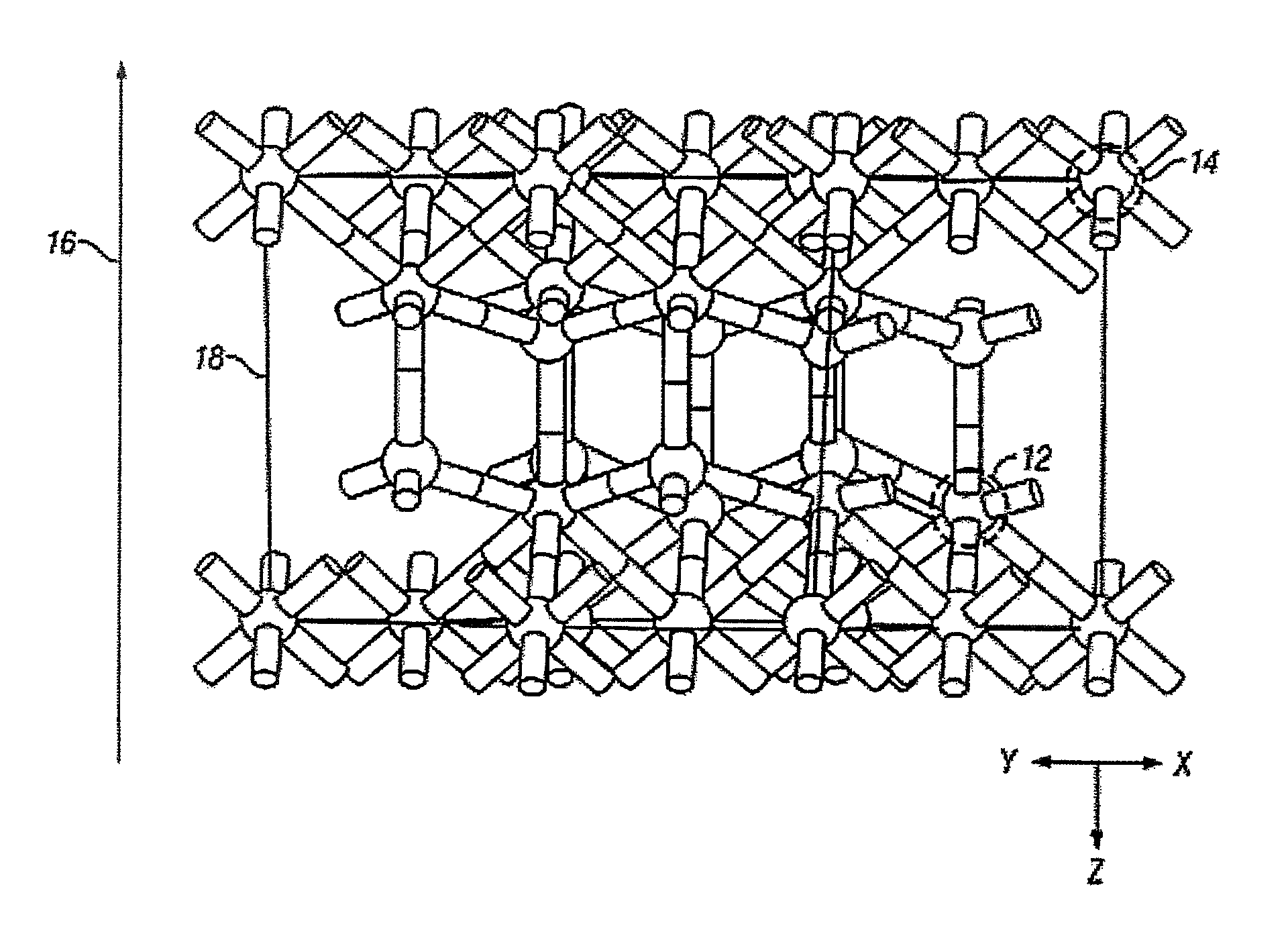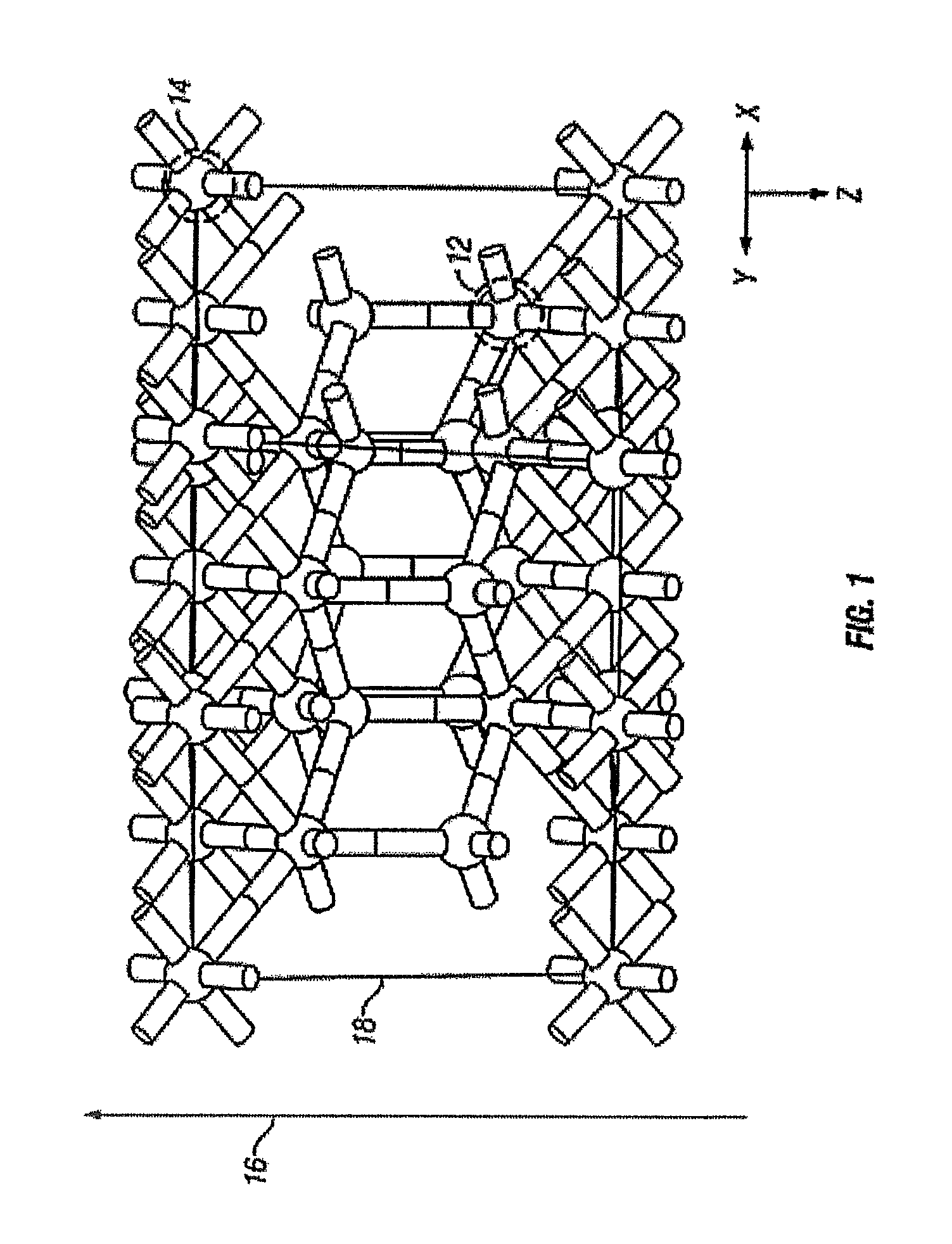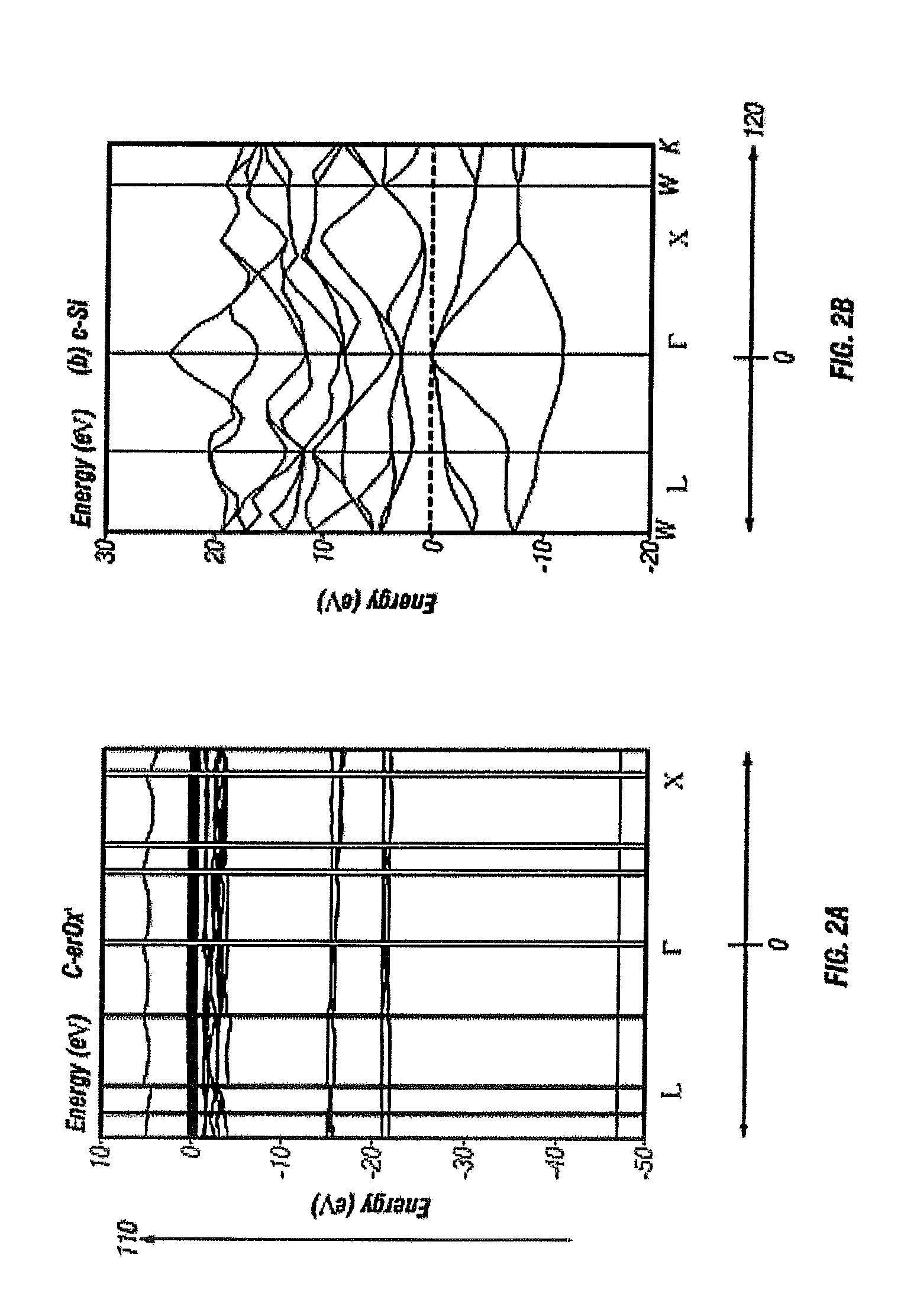Rare earth-oxides, rare earth -nitrides, rare earth -phosphides and ternary alloys with silicon
a technology of rare earth oxides and ternary alloys, which is applied in the direction of lanthanide oxides/hydroxides, instruments, and semiconductor/solid-state device details, etc., can solve the problems of reliability degradation, dielectric breakdown, and difficult to replicate the high quality of si/sio/sub>2 interface in practically any other material system, and achieve high quality
- Summary
- Abstract
- Description
- Claims
- Application Information
AI Technical Summary
Benefits of technology
Problems solved by technology
Method used
Image
Examples
example 1
[0112]One structure for the epitaxial c-ErOx, representing the single crystal composition ErxOy, is shown in FIG. 1, where x and y are real positive numbers. In FIG. 1, the c-ErOx structure is a construction of a supercell with periodic boundary conditions and is generally denoted as 10. The rare-earth atoms are represented as dark spheres 12 and the lighter spheres represent oxygen atoms 14. The layer-by-layer growth direction 16 is co-incident with the crystal growth direction. A portion of one complete two-dimensional oxygen terminated layer is shown as 18.
[0113]Using a density functional theory plane-wave psuedopotential method and self-consistent minimization, an energy-momentum calculation is performed. FIG. 2(a) illustrates energy E, denoted as 110, dispersion as a function of crystal momentum k, denoted as 120 of the single crystal rare-earth oxide ErxOy, of the present invention.
[0114]For comparison a bulk Si E-k curve is computed and shown in FIG. 2(b). c-ErOx has a quanti...
example 2
[0116]In one embodiment of the present invention, compositions are provided where nitrogen atoms with a very high affinity for accepting three electrons when forming RE compounds. That is, anions with N3− electronic states can form single crystal, polycrystal and amorphous rare-earth nitride compounds of the formula RE3+N3−. Conditions suitable for preparation RE—N compounds are for example using UHV environment suitable for deposition onto a substrate, an elemental RE source and source of atomic nitrogen (N) and or metastable excited molecular nitrogen (N2*) and or unexcited molecular nitrogen gas (N2).
[0117]Rare-earth nitride ErN binary compounds can have a greater disposition to crystallize in substantially cubic and or wurtzite structures. This crystal symmetry group is well suited to preferential epitaxial growth on diamond like crystal structures such as the Si(001)-oriented surface, or related misoriented surfaces. In one specific embodiment of the present invention, RE—N com...
example 3
[0118]In one embodiment, substantially single crystal, rare-earth phosphide compositions are provided. Under suitable conditions phosphorous forms strong ionic RE—P bonds. The phosphorous atoms or molecules have a very high affinity for accepting three electrons when forming RE compounds. That is, anions with P3− electronic states can form single crystal, polycrystal and amorphous rare-earth phosphide compounds of the formula RE3+P3−. Conditions suitable for preparation RE—P compounds are, for example, using UHV environment suitable for deposition onto a substrate, an elemental RE source, a source of atomic phosphorous (P), molecular phosphorous (P2 and or P4), sublimation of phosphide compounds, and the like.
[0119]Rare-earth nitride ErP binary compounds can have a greater disposition to crystallize in substantially cubic and or wurtzite structures. This crystal symmetry group is well suited to preferential epitaxial growth on diamond like crystal structures such as the Si(001)-orie...
PUM
| Property | Measurement | Unit |
|---|---|---|
| thickness | aaaaa | aaaaa |
| wavelengths | aaaaa | aaaaa |
| thickness | aaaaa | aaaaa |
Abstract
Description
Claims
Application Information
 Login to View More
Login to View More - R&D
- Intellectual Property
- Life Sciences
- Materials
- Tech Scout
- Unparalleled Data Quality
- Higher Quality Content
- 60% Fewer Hallucinations
Browse by: Latest US Patents, China's latest patents, Technical Efficacy Thesaurus, Application Domain, Technology Topic, Popular Technical Reports.
© 2025 PatSnap. All rights reserved.Legal|Privacy policy|Modern Slavery Act Transparency Statement|Sitemap|About US| Contact US: help@patsnap.com



